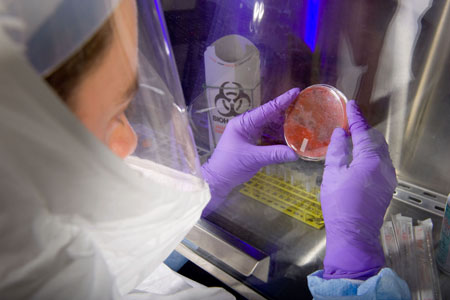Biological Fate & Transport

The release of a biological agent, such as Bacillus anthracis spores, in an urban area could create large, contaminated areas, including building exteriors, streets and sidewalks, and vegetation. The response to a large-scale biological release would pose considerable challenges due to the varied surfaces and environments contaminated, but also due to the dynamic nature of the contaminant over time.
Knowing how a biological agent persist in environmental conditions helps authorities assess and respond in the event of the agent’s release..
EPA conducts research to understand the persistence, fate and transport of several biological agents, including Bacillus anthracis, several species of Brucella, Burkholderia mallei, Francisella tularensis, Yersinia pestis, and others. This information informs emergency response and remediation decisions following a contamination incident, including where and how to sample to characterize the magnitude and extent of contamination and planning decontamination strategies.
Research Publications
- Summary: Persistence of Categories A and B Select Agents in Environmental Matrices
- Report: Biological Contaminant Fate and Transport in an Urban Environment
- Report: Persistence of Non-pathogenic Bacillus Spores on Sewer Infrastructure Surfaces and Assessment of Decontamination Using Chlorine
- Report: Determination of the Persistence of Non-Spore-Forming Biological Threat Agents in the Environment
- Report: Evaluation of Persistence of Viruses in Landfill Leachate
